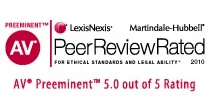The Steinberg Law Firm Files Class Action Lawsuit Against Goose Creek Aluminum Smelter for Excessive Emissions of Harmful Alumina Particulates
South Carolina Century Aluminum Dust Lawsuit
On November 10, 2023, fifteen residents of Goose Creek and Moncks Corner filed a class action lawsuit against Century Aluminum for themselves and for anyone that resided within seven miles of the Century Aluminum smelter from September 3 through September 30 of 2023. Nearly all of Goose Creek is within seven miles of the smelter, as well as parts of Moncks Corner, Hanahan, North Charleston, Ladson, and Summerville.
The lawsuit alleges that the smelter began emitting excessive amounts of particulates in the winter or spring of 2023. Particulates are microscopic solid particles so small that they can float in the air for extended periods of time. As alleged in the lawsuit, the particulates emitted by the smelter are primarily alumina, also known as aluminum oxide, which is the raw material used by the smelter to make aluminum.
On at least three occasions in September of 2023, the systems that are supposed to trap particulates before they can be emitted from the smelter malfunctioned, and substantial amounts of particulates were released into the air in Goose Creek. The lawsuit alleges that despite knowing about the malfunctioning system and the particulates spewing from the smelter, Century Aluminum continued running the smelter around the clock and continued emitting excessive amounts of harmful particulates.
The particulates emitted by the smelter, depending on the size of a particulate, accumulated in residents’ noses, throats, eyes, and ears, were inhaled and trapped in residents’ lungs, or passed through residents’ lungs and into their blood. Contact with the particulates and inhalation of the particulates caused people living around the smelter to suffer shortness of breath and difficulty breathing, asthma attacks, irritated eyes, noses, throats, and ears, sinus and chest congestion, cough, excess mucus, and headaches.
The particulates also settled out of the air onto residents’ homes, cars, and other property. Residents suffered damage to the paints and finishes on their homes and cars caused by the alumina. Residents also were not able to use their homes and yards like they normally would because everything was covered in a layer of white alumina dust.
The lawsuit asserts claims for residents for the temporary and long-term health problems caused by the dust, for the damage to residents’ homes, cars, and other property, and for the dust interfering with residents’ ability to use their homes in the way they normally would.
How do I know if I was harmed by the Century Aluminum dust?
If you lived near the Century Aluminum smelter in September of 2023, you came into contact with particulates emitted from the smelter. As explained here, those particulates are harmful to your health.
You may have experienced some of the following symptoms from contact with or breathing in the particulates from the smelter:
- Difficulty breathing;
- Shortness of breath (feeling like you can’t take a full breath or can’t get enough air);
- Asthma attacks;
- Irritation, burning, itching of eyes, nose, throat, or ears;
- Congestion in sinuses or chest;
- Cough;
- Runny nose, mucus in throat, or excess mucus generally; and
- Headaches.
You also may have experienced white dust covering your home, yard, vehicle, or other property. The alumina dust is sandy and gritty and can scratch or discolor paint, especially paint on a car or barbecue grill.
What can I do to join the lawsuit or pursue claims?
Because the lawsuit was filed as a proposed class action, anyone who lived within seven miles of the smelter from September 3 through September 30 of 2023 would be part of the lawsuit and entitled to a portion of any recovery in the lawsuit, assuming the Court allows the case to proceed as a class action and the person does not opt-out once a class action is certified. In other words, at this time you do not have to do anything to be part of the proposed class action or pursue claims.
If you have questions or concerns, believe you should be named as a plaintiff in the lawsuit, believe you have information that would be helpful, or otherwise want to communicate with The Steinberg Law Firm regarding this case, please fill out the form below.
What are particulates? How are particulates harmful?
Particulates are microscopic particles so small that they can remain suspended in the air for significant periods of time. Larger particulates are generally trapped by the mucous membranes in your eyes, nose, throat, and ears where they cause irritation, burning, and itching. Smaller particulates can be inhaled into your lungs, and the smallest particulates can pass through your lungs and into your blood.
The most significant particulates are those referred to as PM10 and PM2.5. PM10 refers to particulates that have a diameter of less than 10 microns, and PM2.5 refers to particulates that have a diameter of less than 2.5 microns. There are 1,000 microns in one millimeter, and there are 25,400 microns in one inch. For comparison, a human hair has a diameter (the width across the hair) of about 70 microns, so a PM10 particle is 7 times smaller than the width of a human hair, and a PM2.5 particle is 28 times smaller than the width of a human hair.
PM10 particles can be inhaled deep into a person’s lungs and cause respiratory harm. PM2.5 particles are so small that they can pass through a person’s lungs into their blood where they can cause serious harm and even heart attacks and deaths.
The United States Environmental Protection Agency (the “EPA”) found that short-term exposure to PM2.5 and PM10 can cause heart attacks and death, respiratory problems, nervous system issues, and reproductive harm. The EPA found “strong evidence for a relationship between short-term PM2.5 exposure” and respiratory harms “including asthma exacerbation, chronic obstructive pulmonary disease (COPD) exacerbation, and combined respiratory-related diseases.” The EPA warns that exposure to inhalable particulates “can affect both your lungs and your heart” and “numerous scientific studies have linked particle pollution to a variety of problems, including premature death in people with heart or lung disease, nonfatal heart attacks, irregular heartbeat, aggravated asthma, decreased lung function, and increased respiratory symptoms, such as irritation of the airways, coughing or difficulty breathing.” The Agency for Toxic Substances and Disease Registry in the United States Department of Health & Human Services concluded that animal studies of alumina inhalation showed “respiratory effects” including “increases in alveolar macrophages, granulomatious lesions in the lungs and peribronchial lymph nodes, and increases in lung weight.”
Non-governmental reports have found “considerable consistency across studies” of the health effects of particulates. Studies have consistently found that particulates cause decreased lung function, respiratory symptoms, asthma, and cough. Studies of particulate impacts have also consistently found a link between particulate emissions and hospital and doctor visits for respiratory problems and a link between particulate emissions and deaths from respiratory and cardiac issues.
What particulates does the Century Aluminum smelter emit?
The smelter received a permit from the South Carolina Department of Health and Environmental Control (“DHEC”) allowing the smelter to operate subject to certain limitations on the particulates and other pollutants it can emit. The permit prohibits the smelter from emitting PM10 or PM2.5 particulates above certain levels. The permit also provides that the smelter must have operating emission control systems that it regularly inspects and maintains.
When DHEC issued the permit for the smelter, DHEC found that without emissions control systems, the smelter would emit about 108 pounds of particulates per hour of which 75 pounds would be PM10/ PM2.5 particulates. In other words, without an operating emissions control system, the smelter would emit massive amounts of harmful particulates.
The statements by DHEC in issuing the permit are in line with the EPA’s findings regarding particulate emissions from prebaked anode cell smelters—the type of smelter that Century Aluminum operates at Mount Holly. The EPA found that without emissions controls, 58% of the particulates emitted by a smelter of that type would be PM10 or smaller, and 28% of the particulates emitted would be PM2.5 or smaller. The EPA also found that type of smelter emits substantial quantities of particulates that are significantly smaller than PM2.5, with 18% of particulates emitted smaller than 1.25 microns and 13% of particulates emitted smaller than 0.625 microns.
Where can I get a copy of the lawsuit?
You can download a copy of the lawsuit here.
Century Aluminum Dust Lawsuit Contact Form
Practice Areas
Results
WE HAVE RECOVERED OVER $800 MILLION FOR CLIENTS IN THE LAST 10 YEARS, INCLUDING:
$3.15 Million
Car Accident Settlement
$3.85 Million
Workers' Comp Case
Leaders in the Legal Industry
Steinberg attorneys have been awarded numerous distinctions, such as Super Lawyers, Best Lawyers in America by U.S. News & World Report, Gedney M. Howe, Jr. Award for Outstanding Public Service, the SC Leadership in Law award, and has been voted Best Workers’ Comp Firm in SC, among other distinctions.
What Our Clients Say
They have amazing lawyers!
They have worked on an impossible situation and exceeded all expectations in the resulting settlements. I would recommend the Steinberg Law Firm to anyone and everyone!
- Susan
My experience was excellent
From the first consultation to the end of my case I was kept updated step by step. My attorney worked hard for me and got me more than what I expected.
- Vanessa
I never felt like I was alone
My lawyer and his Paralegal were right with me the entire case. I never felt like I was alone. At every turn they were in my corner. Someone recommended me to Steinberg law firm and I gladly would do the same for someone else.
- Mike
I couldn't have asked for better
The people from the Steinberg group are top-notch. They handled my case extremely well, I couldn’t have asked for a better performance. Thank you all so much for all you did for me.
- Brian
I am grateful for them!
At my worst, they honestly and carefully protected and defended my family on multiple levels. I’m a client for life and the integrity of this law firm is unmatched. Thank You Steinberg Law Family!!!
- Brandy
The people are thoughtful and professional
Questions and concerns always get answered and concerns are taken care of. Thank you all at Steinburg for a good experience and for showing me that you care about your clients.
- Joan
The best law firm
This the best law firm anyone could ever deal with. Mr. Pearlman will work hard to get everything that is owed to you. It was a pleasure to have been represented by this firm.
- Rena
A wonderful experience
Had a wonderful experience with Mr. Pearlman and his team. Thank you very much for your diligence and expertise.
- Meagan
I highly recommend them
They work as a team providing the best referrals and assistance to accomplish what my family and I needed. I highly recommend them because you won’t be disappointed.





















